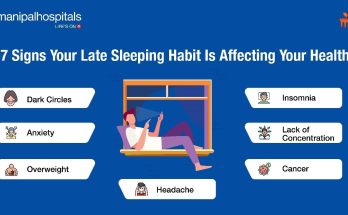In the relentless pursuit of fitness goals, whether it’s building strength, increasing endurance, or simply maintaining a healthy lifestyle, the focus often heavily gravitates towards the intensity and consistency of the workout itself. However, what happens *after* the last rep or the final mile is arguably just as critical, if not more so, to sustained progress and injury prevention. Post-workout recovery is not merely a passive cool-down; it’s an active, multi-faceted process that repairs muscles, replenishes energy stores, reduces soreness, and prepares the body for future demands. Mastering the art of efficient post-workout recovery is a cornerstone of any effective fitness regimen, transforming mere exertion into genuine gains and ensuring long-term physical well-being.
One of the immediate and fundamental components of effective post-workout recovery is proper **nutrient replenishment**, often referred to as the “anabolic window.” While the strictness of this window is debated, the principle remains: fueling your body with the right macronutrients shortly after exercise is crucial. Protein is paramount, as it provides the amino acids necessary for muscle repair and growth, counteracting the micro-tears that naturally occur during strenuous activity. Aim for 20-40 grams of high-quality protein within an hour or two post-workout, perhaps from a whey protein shake, lean chicken, eggs, or Greek yogurt. Equally important are carbohydrates, which replenish glycogen stores—your body’s primary energy source depleted during exercise. Complex carbohydrates like whole grains, fruits, and starchy vegetables help restore these reserves, preventing fatigue and ensuring you’re ready for your next session. A balanced recovery meal might be grilled chicken with sweet potato and broccoli, or a smoothie with protein powder, fruit, and a source of healthy fats.
Beyond immediate macronutrient intake, **hydration** stands as an often-underestimated cornerstone of recovery. During exercise, the body loses significant fluids through sweat, impacting cellular function, nutrient transport, and overall performance. Dehydration can exacerbate muscle soreness and prolong recovery time. It’s not enough to simply drink water during your workout; continuous hydration throughout the day, and particularly post-exercise, is essential. Replenish fluids with plain water, but also consider electrolyte-rich beverages if your workout was particularly intense or prolonged, as electrolytes like sodium and potassium are lost through sweat and are vital for nerve and muscle function. Monitoring urine color can be a simple indicator of hydration levels; aiming for a pale yellow suggests adequate fluid intake.
**Active recovery and stretching** are also vital for enhancing blood flow, reducing muscle stiffness, and improving flexibility. While intense exercise requires rest, complete immobility is often counterproductive. Gentle, low-intensity activities like a leisurely walk, light cycling, or swimming can promote circulation, helping to clear metabolic waste products from muscles and deliver fresh oxygen and nutrients. Following this, dynamic and static stretching can help restore range of motion and alleviate muscle tightness. Static stretches, held for 20-30 seconds, are generally best performed *after* your muscles are warmed up, either post-workout or during a separate session. Focusing on major muscle groups targeted during your workout can significantly reduce post-exercise soreness and improve overall flexibility, mitigating the risk of future injury.
Perhaps the most critical, yet frequently overlooked, aspect of post-workout recovery is **sleep**. It is during deep sleep that the body undergoes its most significant repair and recovery processes. Hormones crucial for muscle growth and tissue repair, such as growth hormone, are primarily released during sleep. Adequate rest allows the central nervous system to recover, reduces inflammation, and recharges mental energy. Consistently sacrificing sleep directly impedes your body’s ability to adapt to training stimuli, diminishing performance gains and increasing susceptibility to injury and illness. Aim for 7-9 hours of quality sleep per night. Establishing a consistent sleep schedule, creating a relaxing bedtime routine, and optimizing your sleep environment (dark, quiet, cool) are all investments in your recovery and overall athletic potential.
Furthermore, incorporating **stress management techniques** into your daily routine indirectly supports recovery. Chronic stress, whether from work, personal life, or overtraining, elevates cortisol levels, a hormone that can break down muscle tissue and hinder recovery. Practices such as mindfulness meditation, deep breathing exercises, yoga, or spending time in nature can help lower stress hormones, promoting a more anabolic, recovery-friendly state. Recognizing that recovery is not just physical but also mental and emotional is crucial for a holistic approach to well-being.
Consider an individual training for a marathon. Their daily 10-mile run is only half the battle. Immediately after, they consume a protein and carbohydrate-rich smoothie. Throughout the day, they conscientiously sip water. In the evening, instead of collapsing, they engage in a 20-minute session of foam rolling and static stretching to address tight hamstrings and quads. Most importantly, they prioritize getting to bed by 10 PM, ensuring eight hours of uninterrupted sleep. On their rest days, they might engage in light swimming to promote blood flow without stressing their joints. This multi-faceted approach to recovery ensures their body is constantly repairing, adapting, and strengthening, allowing them to consistently perform at a high level and reduce their risk of injury over the grueling training period.
In conclusion, optimizing post-workout recovery is an art that demands intentionality and consistency, elevating a fitness regimen from mere exertion to intelligent progress. By strategically focusing on timely and appropriate nutrient replenishment, meticulous hydration, active recovery and stretching, prioritizing adequate sleep, and integrating stress management techniques, individuals can significantly enhance muscle repair, reduce soreness, boost energy levels, and fortify their body’s resilience. It’s about recognizing that the work continues long after the final sweat drop, transforming recovery from an afterthought into a deliberate and indispensable component of sustainable physical health and peak performance.




